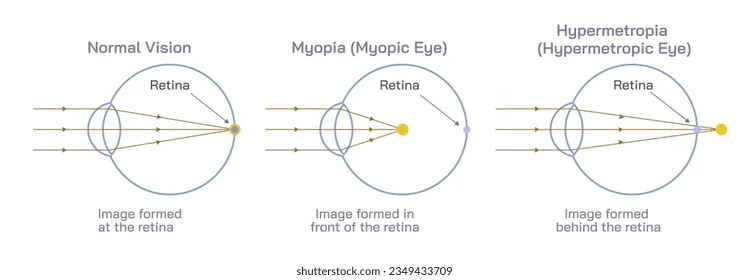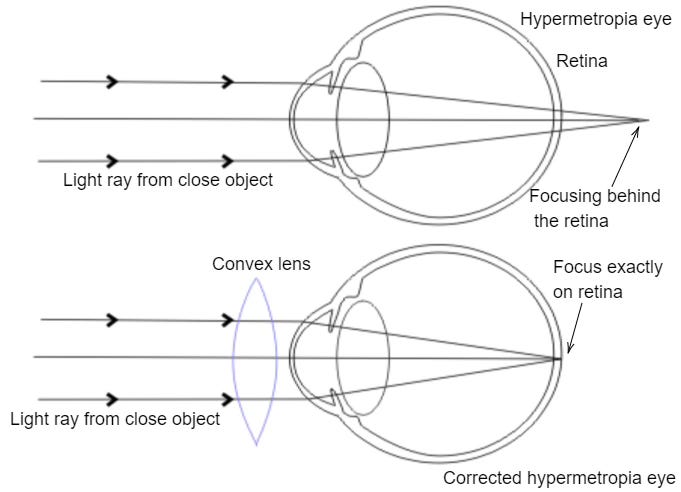Recently the BBC reported on a study about short-sightedness.
I currently work in an eye emergency unit. One of the most common emergencies I see is what we call “flashes and floaters”. This is when a patient has presented with symptoms of Retinal Detachment.
Your retina may choose to peel off of the back of your eye for multiple reasons. One of the most common is a history of myopia. So, when I read this article and the paper it is based on, I was shocked.
They predict that by 2025 close to 800 Million kids will be affected by myopia. That means close to 800 million adults who are at risk of retinal detachment.
Now, to make sure all this mumbo-jumbo makes sense to you, let’s answer three questions:
What is short-sightedness?
Why does it happen?
What are the risks apart from a pair of chunky spectacles?
What is Short-Sightedness?
You may have heard someone say they are “short-sighted” or “long-sighted”. When they say this, they are referring to the distance in their environment that they can see.
Those who can see things close to them at ease, but struggle with distance vision are called short-sighted.
Those who can see things far away at ease, but feel significant eye strain when they attempt to look at something close to them are called long-sighted.
The medical term for this is Myopia or Hypermetropia.
In a normal-shaped eye in which everything happens perfectly, the light rays travel onto the cornea and lens, bend towards the retina, converge at the retina and we see an image the diagram on the left-
Those yellow lines represent light rays. See how they perfectly converge onto the retina? The rays need to converge on the retina, otherwise the image formed will be blurred, at best.
Notice the image in the middle. For some reason, the convergence point seems to be in front of the retina. People with this problem have trouble seeing things that are far away. You can imagine how the convergence point would shift further away from the retina, the farther the object is!
Conversely, in hypermetropia, the convergence point is behind the retina. An object placed close to the eye will be difficult to see, but drawn away from the eye- and it might come into focus.
Why does it happen?
Lets think about myopia for a second.
Anything that will make the light rays converge before they should will lead to myopia, right? So, if the cornea is curved wrong, or the lens is extra powerful, it will lead to myopia!
How about if the eyeball itself is too long?
No matter how hard the cornea and lens try to converge the light rays appropriately, they will never reach their target because the retina is just too far away. A long eyeball is one of the most common reasons for a myopic eye.
The fix for this is simple too. What if we change the direction in which the light rays enter the eye in the first place?
If we look at the diagram closely, we can see that the rays just don’t seem to converge at the retina in the image above. However, with the application of a concave lens, the light rays change direction so that they enter the eye in a divergent fashion. When the cornea and lens do their regular job of convergence- voila! They find the retina.
Concave lenses have a negative or minus power. Like -1.25.
Correction of hypermetropia is the same thing, but flipped:
The concave lens makes the rays enter in a convergent fashion, thus the rays ultimately converge earlier than they were doing before! Convex lenses have a plus or positive power! Like +1.25
What are the risks?
I wouldn’t consider spectacles a risk. The ones they make now are cool-looking, and men seem to dig the look of a woman with glasses??
Anyway, I believe the real risk of myopia is retinal detachment.
We discussed how a long eyeball can lead to myopia. The longer the eyeball, the more stretched the tissues will be including the retina. With time, the retina may thin and degenerate, increasing the risk of retinal tears and detachments.
Retinal detachment is a sight-threatening condition. Many patients end up requiring multiple surgeries, and their vision may deteriorate significantly.
For those with small eyeballs- like in hypermetropia- there is a risk that a child left undiagnosed might develop a squint.
Also, a condition called glaucoma may occur. Its difficult to explain why it happens, but simply put- a smaller eyeball has less space- that means the pressure in the eyeball may increase- this could compress important structures like the optic nerve- AKA glaucoma.
If you have heard of glaucoma and would like an explainer on it- let me know:
To LASIK or not to LASIK?
Finally, the million-dollar question. Should you get surgery to get rid of your glasses?
Now that’s a whole other story. Stay tuned!!
Keep reading with a 7-day free trial
Subscribe to MedWithSam: Science Simplified to keep reading this post and get 7 days of free access to the full post archives.








